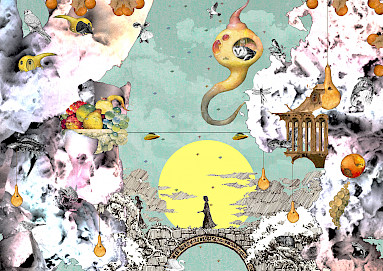Difficult Present, Ambitious Futures: Despite, or perhaps because of, the present unsettling of norms under repeated pandemic lockdowns and increasing signs of environmental catastrophe, final-year M.Arch students sought to re-imagine alternative futures and transformed environments: post-gender utopias in Dogger Bank; inhabiting a semi-submerged Hull in a layered, Calvino-esque arrangement or as a wildlife archipelago constructed via 3D-printed coral; rehabilitating North Sea oil rigs for carbon sequestration and human settlement; or (even!) an English football club majority-owned by its fans through a hybrid-typology, mixed-use stadium; among other visions.
The M.Arch employs the vertical unit structure, where student sub-cohorts negotiate their interests within/against the framework of ideas, strategies and representational tools outlined by two tutors. Unitfifteen pushes the limits of advanced Industry-4.0 technologies to create G.R.E.E.N and S.M.A.R.T. environments, offering utopian visions for the posthuman condition supported by science fiction film and literature. Radical Commons Unit probed alternatives to capitalist exchange: projects, simultaneously grounded and speculative, proposing commons of shared resources, peer-to-peer production and equitable space-making – particularly the commons generated by environmental change. Such speculative ways of worldmaking were developed after a pe-final year which fulfils the professional criteria of integrating building systems and health-and-safety requirements into creative design strategies.
The programme benefitted immensely from support by architectural practices and Kirklees Council.
We also thank colleagues in other schools of architecture whose lectures and crits enriched our students’ learning experiences.
Special Thanks to Laura Allen, Simon Allford, José Ángel Hidalgo Arellano, Caterina Benincasa-Sharman, Karen Burns, Martyn Dade-Robertson, Karim Elgendy, Beatrice Galilee, Yun Gao, Parikshit Goswami, Nuno Guerreiro, Harriet Harris, Marko Jobst, Leslie Johnson, Jihum Kim, Perry Kulper, Leslie Lokko, Bea Martin, Tuba Ozbay, Gurminder Sanghera, Kyung Wook Seo, Kevin Singh, Mark Smout, Neil Spiller, Sasha Userdnaja, Michael Wilson, Edward Yang and our admin and IT support team.













